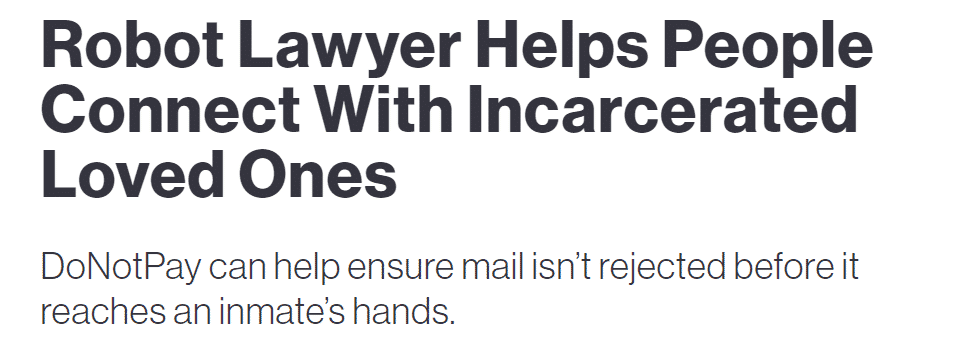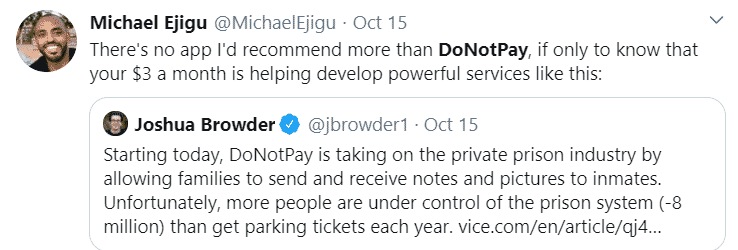Check Out the CDCR Inmate Mail Guidelines
Writing letters to inmates is what keeps them in the loop about the life outside, prepares them for it, and lifts their spirits.
You can write them love letters, creative ones, or those of encouragement, but before you do so, make sure to check the inmate mail guidelines that each prison has.
Our article gives you a quick tour of the inmate mail rules in California prison facilities.
CDCR Inmate Mail—General Rules

The California Department of Corrections and Rehabilitation allows the sending and receiving of inmate mail according to the rules and regulations outlined in the CDCR Operations Manual and the California Code of Regulations (CCR). The rules stipulate that:
- All mail must be addressed appropriately
- Inmates may receive private correspondence, confidential mail, periodicals, and packages
- All outgoing and incoming mail must be opened and inspected (non-confidential mail is read as well)
Addressing the Inmate Mail
To ensure that the mail you want to send to a California inmate is promptly delivered to the intended party, you should follow these guidelines for addressing:
- Inmate’s full name, CDC #
- Institution name
- P.O. Box Housing
- City, CA ZIP code
If you are not sure what the precise inmate mail address is, you can refer to the facility locator page. You can find the inmate’s facility address by selecting the prison they are in. Address the mail to the facility where your intended recipient is.
When sending mail, make sure to also include:
- Your full name
- Address
- City, state, and ZIP code
In case you don’t know what California prison facility the inmate you want to send mail to is located, DoNotPay can help you find them.
Who Can Send Mail to a California Prison Inmate?
Depending on the type of mail sent to inmates, eligible senders are listed in the table below.
| Mail Type | Eligible Senders |
|
Non-confidential mail |
|
|
Confidential mail | Including, but not limited to:
|
|
Package |
|
|
Publications | A third party may purchase a publication for an inmate, but they have to have it mailed by a:
|
For more info on eligible senders, check the CDCR Operations Manual.
Inspection of Inmate Mail
All mail, confidential or non-confidential, as well as publications and packages, are subject to inspection.
Non-confidential mail must also be read before being delivered to the inmate or mailed to the individual outside of prison.
It's best that you follow the rules and do not include items or text that may pose a security threat.
DoNotPay Locates Inmates In Seconds

If you want to visit an inmate or send them mail but don’t know how to find an inmate, DoNotPay has all the tools you need to easily locate them!
Our app’s Connect With an Inmate product comes with extraordinary features—one of them being Locate Someone.
To see how it works, open DoNotPay in your and do the following:
- Choose Connect With an Inmate
- Select Locate Someone
- Enter the inmate details, such as the name and the state they are in
- Submit the request
DoNotPay will find your inmate and give you the name of the facility they are currently in.
Can I Send Stamps to an Inmate in California?
Yes, up to 40 stamps per envelope.
You can see the list of all the dos and don’ts when sending mail to an inmate in California in the table below.
| Do Send | Don’t Send |
|
|
Can I Send and Receive Letters via DoNotPay?

Absolutely! DoNotPay’s Connect With an Inmate service facilitates contact with your prison pen pal in a way that does not disturb your daily routine.
It comes with two additional features:
- Send a Personalized Letter
- Virtual Mailbox
These two combine in a way that you and your correspondent have a unique experience—you will be sending and receiving emails, whereas they will be handling printed and written letters.
You don’t need to worry about how to address letters to an inmate or other rules. All you need to do is focus on writing to the prisoner you want to stay in touch with.
Here’s how to do it:
- Access DoNotPay’s Connect With an Inmate product from your
- Click on Send a Personalized Letter
- Provide the inmate’s name, ID, and the facility they are housed in
- Type your letter or upload an attachment
- Add any photos you’d like to share
- Confirm that you want to receive emails from the recipient and send the request
DoNotPay will print and forward the letter, and when you receive a response, we will digitize it and send it to your Virtual Mailbox.
You can click the Request Mail Check to see if you have new mail.
If I Write a Prisoner in California, What Topics Should I Avoid?
Always keep in mind that the correctional staff will read the letter you have sent to an inmate. If the text poses a security threat, your recipient will never get it.
If the inspecting staff disagrees with the morals, values, attitudes, or language of the text, they will still deliver the letter. A letter won't be forwarded if it:
- Contains coded messages
- Concerns plans to escape or assists in an escape
- Has depictions or portrayals of nudity or obscene activity, including sexual activity (consenting or non-consenting), sadomasochism, bestiality, and more
- Threatens extortion or blackmail
- Contains human or animal hair, fluids, or substances
- Describes how to sabotage computers, electronics, or communication as well as how to make drugs, weapons, explosives, or destructive devices
- Contains plans on how to breach the security or disrupt the order of any facility
- Has lottery or gambling information or paraphernalia
How Often Can Inmates Receive Books?
There is no quarterly limit for book shipments, but an inmate may only have ten books in their possession at any time. If inmates receive new books, they have to send home or donate the old ones.
Note that you can only purchase books and magazines through approved vendors, such as Barnes & Noble and Amazon.
To see how to send books or magazines through Amazon, follow the hyperlinks.
What Are the Eligible Inmate Package Vendors?
Some of the CDCR approved inmate package vendors are:
If you want to learn more about California inmate package rules, DoNotPay can give you all the info you need.
Want To See What Else DoNotPay Can Do for You?
If you need to check inmate mail rules in Texas or inmate package regulations in Alabama, Nevada, or Florida, DoNotPay is your go-to for all the answers you may have!
Log in to your DoNotPay in your and have a go at other services we provide to help you:
- Schedule a DMV appointment
- Cancel subscriptions or memberships
- Request compensation for delayed or canceled flights
- Send Demand Letters To anyone in small claims court
- Locate your assets
- Manage bills you can't pay
- Get in touch with customer service
- Register for services without phone verification
- File a warranty claim
- Protect yourself from stalking and harassment
- Obtain refunds or chargebacks from other companies
- Fight your speeding tickets
- Start free trials risk-free
- Block from spam mail for good
- Stop text spam
- Take down robocalls
- Appeal parking tickets
- Sign up for clinical research
- Protect your work against copyright infringement
- Contest your traffic tickets
- Get in touch with your incarcerated loved ones
- Handle credit card issues
 By
By